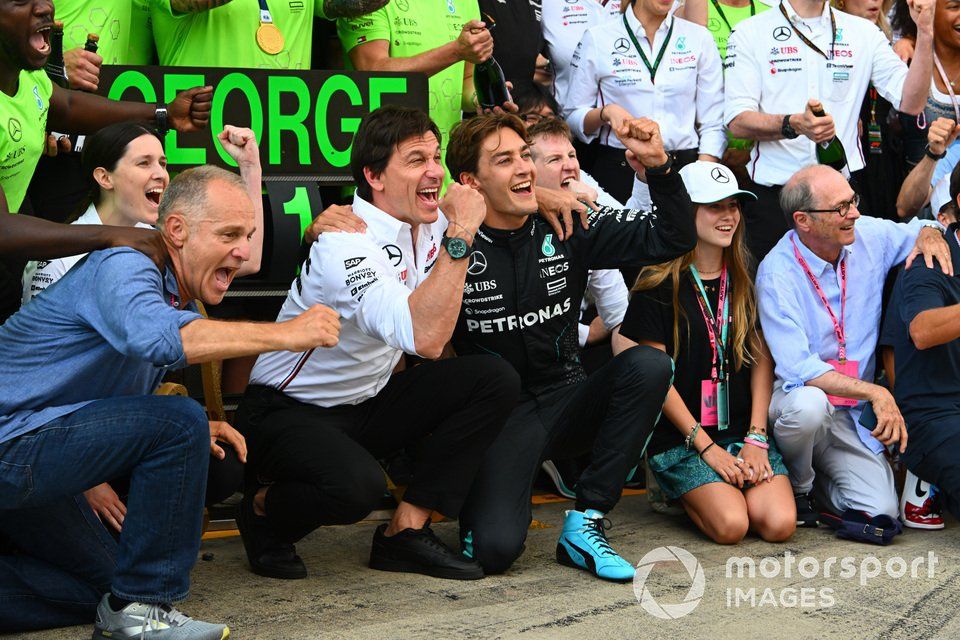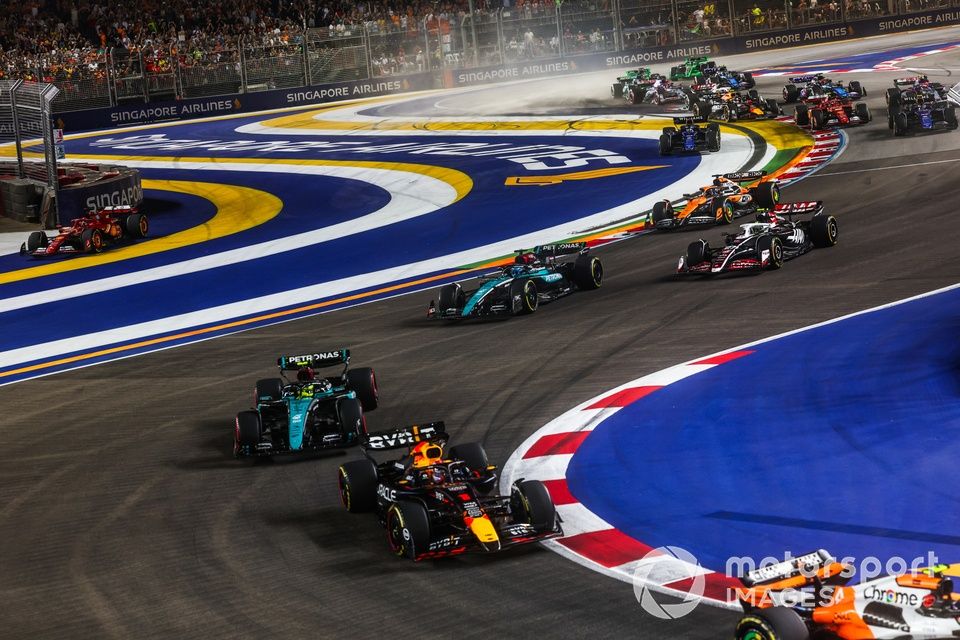Mercedes may still be chasing answers about Formula 1’s current ground effect cars, but it has no interest in writing off next year to get ahead for 2026’s new rules era.
The German manufacturer has had a rollercoaster of a season; having started on the back foot it delivered a run of victories before the summer break but has since slipped back in recent races.
And with it still playing catch up against the ultra-consistent McLaren squad, the temptation to give up on closing that gap for next year in favour of making an early effort to get ahead for the new regulations that are coming for 2026 is obvious.
However, Mercedes team boss Toto Wolff says the squad has clear targets in delivering wins each and every season – so there is no question that it will push on as much as it can for 2025.
“This is the crux of the matter every year, and especially if you have such a big regulatory change, are you going to compromise one year or the other?” said Wolff, in an exclusive interview with Autosport.
“But I’d like to take it from Niki’s [Lauda] motto, when being asked. ‘Would you rather win this one or the next one?’ And he says, ‘Both.’
“Sometimes it is much less complex than one thinks. Probably the transition of people and capability into the 2026 regulations is going to happen a bit earlier than it would under stable regulations, but it’s not going to be game-changing.

Toto Wolff, Team Principal and CEO, Mercedes-AMG F1 Team, George Russell, Mercedes-AMG F1 Team, 1st position, guests and the Mercedes team celebrate victory after the race
Photo by: Mark Sutton / Motorsport Images
“Nobody’s going to switch the machines off in January, unless you are really nowhere. But there is nothing to gain, because between P10 and P7 doesn’t make a difference for us anyway. We are fighting for victories and podiums, and cannot write it off.”
Current car confusion
Mercedes’ determination to continue throwing everything it can at the current rules comes despite it scratching its head at times over what makes things click.
Wolff explained that the fluctuating form of the top teams in F1 was very hard to understand.
“This variance in performance from race to race, or over a few races, is very difficult to compute, because what looks like an unchanged car can go from race winning to P6,” he said.
“The only team that is not a victim of that is McLaren, who I think have such a solid baseline and a less narrow window than all of us, that they’re able to keep the performance stable.
“All of the others bounce between exuberance and depression. Before the summer, everyone wrote off Ferrari. But they have come back very strong.
“Before the summer, it was Mercedes who was the leading team, and clearly not today anymore. So it is so intricate to identify those performance contributors that at times even that most clever people are lost.”

Max Verstappen, Red Bull Racing RB20, Lewis Hamilton, Mercedes F1 W15, George Russell, Mercedes F1 W15, Nico Hulkenberg, Haas VF-24, Oscar Piastri, McLaren MCL38, the remainder of the field at the start
Photo by: Alastair Staley / Motorsport Images
Asked for his best guess about why car performance moves around so much, Wolff said: “We were before the summer [break] pretty clear where the performance came from. And today we are less because what everyone seems to find out is that more downforce doesn’t always translate into better lap time.
“Now, this is not the sensational news of the century, but it is the interaction between track, temperatures, tyres, balance, aerodynamics, and driver impulse, so many variables, that if you get all your ducks in one line, you are fast.
“And if there is just one factor that is out of line, you can look quickly very bad.”
Getting answers
The uncertainty about nailing the elements to extract consistent race-winning form means it is crucial Mercedes learns as much as it can over the remainder of this season so it is well-prepared for next year.
Wolff sees huge value in the fact that it knows the W15 has won races, so it is not an F1 flop.
“Every session now is, in a way, interesting, because we are able to benchmark against the good races,” he said.
“We can see what’s different on the car, what’s different on the track, what happened with the tyres and all of that. It’s not like we don’t know that this car has pace. It’s a race winner.”

Lewis Hamilton, Mercedes-AMG
Photo by: Erik Junius
And while Mercedes has enjoyed a run of race victories this season that suggests it is starting to get the most of the current regulations, Wolff says the gap to the front is still too much.
“The objective that we have set ourselves every year is to win races,” he said. “We have won three – two were on merit.
“So you can say, from that standpoint, we are meeting certain expectations. But if you look at all of the season, we’re not.
“It’s extremely tight now, between four teams, which is eight cars. And unfortunately, due to non-performance, DNFs, the gap to the leading team is just too big. So we find ourselves in a position in the constructors championship which is not satisfying at all.”








